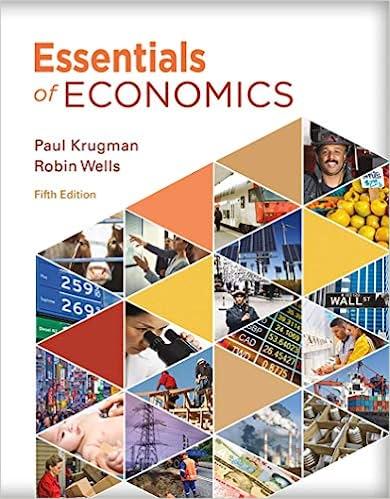Boeing is back at the drawing board. In 2015, after releasing the Boeing 777X, an update to
Question:
Boeing is back at the drawing board. In 2015, after releasing the Boeing 777X, an update to the widely popular 777, they announced plans to redevelop their production process.
Boeing hoped to extend the extremely successful process known as lean production to incorporate robotics and standardize production further, leading to what Boeing calls advanced manufacturing.
Lean manufacturing, pioneered by Toyota Motors of Japan, is based on the practice of having parts arrive on the factory floor just as they are needed for production. This reduces the amount of parts Boeing holds in inventory as well as the amount of the factory floor needed for production. To help move from lean production to advanced manufacturing Boeing has turned to Toyota, hiring some of their top engineers.
Boeing first adopted lean manufacturing in 1999 in the manufacture of the 737, the most popular commercial airplane. By 2005, after constant refinement, it achieved a 50%
reduction in the time it takes to produce a plane and a nearly 60% reduction in parts inventory. An important feature is a continuously moving assembly line, moving products from one assembly team to the next at a steady pace and eliminating the need for workers to wander across the factory floor from task to task or in search of tools and parts.
Toyota’s lean production techniques have been the most widely adopted, revolutionizing manufacturing worldwide. In simple terms, lean production is focused on organization and communication. Workers and parts are organized so as to ensure a smooth and consistent workflow that minimizes wasted effort and materials. Lean production is also designed to be highly responsive to changes in the desired mix of output—for example, quickly producing more sedans and fewer minivans according to changes in customer demand.
Coming full circle, advanced manufacturing was used in the production of the redeveloped 737, the 737 MAX, which started shipping to customers in 2017.
Toyota’s methods were so successful that they transformed the global auto industry and severely threatened once-dominant American automakers. Until the 1980s, the “Big Three”—Chrysler, Ford, and General Motors—dominated the American auto industry, with virtually no foreign-made cars sold in the United States. In the 1980s, however, Toyotas became increasingly popular due to their high quality and relatively low price—so popular that the Big Three eventually prevailed upon the U.S. government to protect them by restricting the sale of Japanese autos in the United States. Over time, Toyota responded by building assembly plants in the United States, bringing along its lean production techniques, which then spread throughout American manufacturing.
Questions
1. What is the opportunity cost associated with having a worker wander across the factory floor from task to task or in search of tools and parts?
2. Explain how lean manufacturing improves the economy’s efficiency in allocation.
3. Before lean manufacturing innovations, Japan mostly sold consumer electronics to the United States. How did lean manufacturing innovations alter Japan’s comparative advantage vis-à-vis the United States?
4. How do you think the shift in the location of Toyota’s production from Japan to the United States has altered the pattern of comparative advantage in auto-making between the two countries?
Step by Step Answer:






